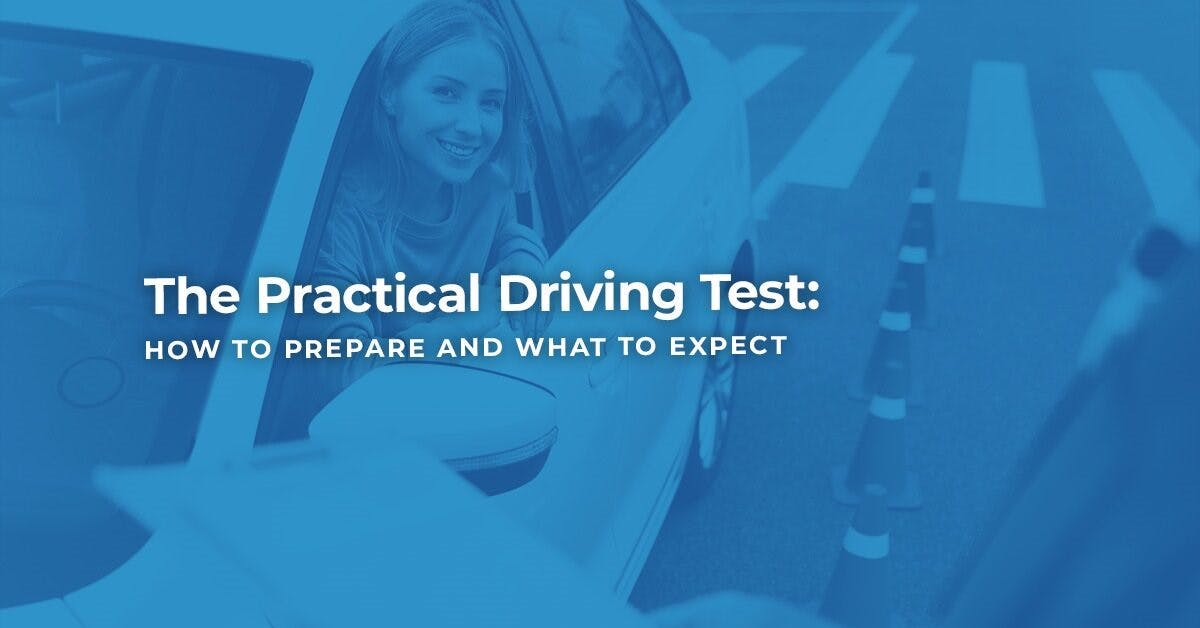When you take your practical driving test, you will need to demonstrate that you can drive safely in different road and traffic conditions – and that you know The Highway Code well.
It can be stressful with an upcoming test on your mind, which is why it helps to feel prepared.
Read on and find out what to expect during the practical driving test and how to prepare, so that you can give yourself the best chance of passing.
Page Contents
How Can I Prepare for the Practical Driving Test?
To prepare for your practical driving test, you should read up on and revise The Highway Code.
In terms of driving, you should ask your instructor to help you go over any manoeuvres or skills you feel less confident in demonstrating.
It's a good idea to visit the test centre in advance of your appointment to get used to the journey and surrounding area.
Make sure that you take good care of yourself in the run up to your test date by trying to get enough sleep and finding ways to relax.
Be sure to test if you can read a plate from 20 metres away well in advance of the test, too.
If not, you should book an appointment with your optician before your driving test.
What Happens During the Practical Driving Test?
There are 5 parts to the practical driving test.
An Eyesight Check
The examiner will check that your eyesight is good enough to drive.
Remember your glasses if you need them!
You will be asked to read a number plate from 20 metres away – you will fail the test and the test will end if you cannot do this.
'Show Me, Tell Me' Questions
The examiner will ask you 2 safety questions, which are known as ‘show me, tell me’ questions.
Show Me
A show me question will require that you demonstrate how to do something.
This could be to wash and clean the front or rear windscreen, to switch on the dipped headlights or to sound the horn.
Tell Me
A tell me question requires that you explain how to carry out a certain action.
You may be asked how to check that the brakes work before starting the journey, or how to check that the headlights and taillights are working – you won’t need to physically check this as this is a tell me question, not a show me question.
General Driving Ability
To test your general driving ability, the examiner may ask you to do any of the following:
- Perform a hill start
- Perform an emergency stop
- Stop at the side of the road
- Pull out behind a parked vehicle
You will be asked to drive in a range of road and traffic conditions, but you won’t be asked to drive on the motorway.
The examiner will provide directions for you to follow.
Driving test routes are not published, though, so you won’t be able to check this before your test.
Try not to focus on any small mistakes, and keep driving as you have been doing in your lessons.
Reversing the Car
Your examiner will ask you to do one of the following:
- Park in a parking bay
- Parallel park
- Pull up on the right hand side of the road
- Reverse for around two car lengths
Take your time and go at your own pace as you carry out these manoeuvres.
Independent Driving
You will have to do about 20 minutes of independent driving, following either traffic signs or directions from a sat nav, depending on which the examiner chooses.
This is to test that you can follow directions using these methods.
Please note that the examiner will set the sat nav up for you, and you cannot use your own sat nav.
Your driving examiner’s supervisor may sit in on the test to assess your examiner’s performance.
Your test can be cancelled and you will have to book and pay for another test if you refuse this.
Just focus on driving as you normally would – the main focus is on driving safely, rather than going the right way.
If you find that any road signs are covered by trees, the examiner will be able to direct you.
What Are Driving Test Faults?
There are 3 types of faults you can accrue during the practical driving test:
- A driving fault (a minor)
- A serious fault (a major)
- A dangerous fault (a major)
You can get up to 15 driving faults and still pass, but any more and you will fail.
As for the two major fault options, you will fail the test with just 1 serious or dangerous fault.
How Long Is a Practical Driving Test?
The practical driving test can take about 40 minutes to complete.
How Much Does a Driving Test Cost?
The theory test costs £23 for cars, and the driving test costs £62.
The prices for other vehicles varies.
When Can I Take My Practical Driving Test?
You need to be at least 17, have a valid provisional licence, and have passed your theory test to book the practical driving test.
You will need to pass your practical test within the 2 years that your driving theory test certificate lasts, or else you’ll need to take and pass the theory test again.
How Will I Know When I'm Ready for the Test?
The Driver and Vehicle Standards Agency (DVSA) says that there is no minimum number of lessons or hours of practice required to take the test.
Your driving instructor will be able to advise you on when they think you’re ready to take the test.
You can discuss your confidence levels with your instructor.
You may be ready to take the driving test if you are at the stage where you don’t need prompts from the instructor, are not making serious or dangerous mistakes whilst driving and can pass the mock driving tests.






